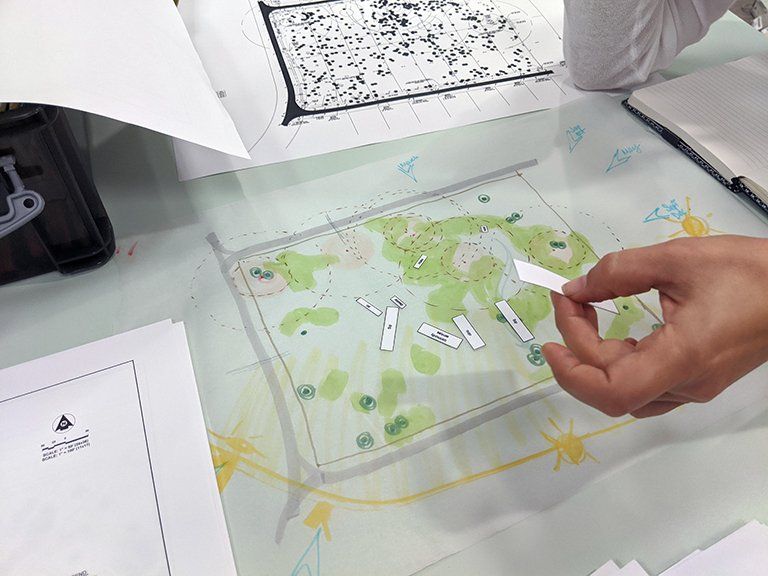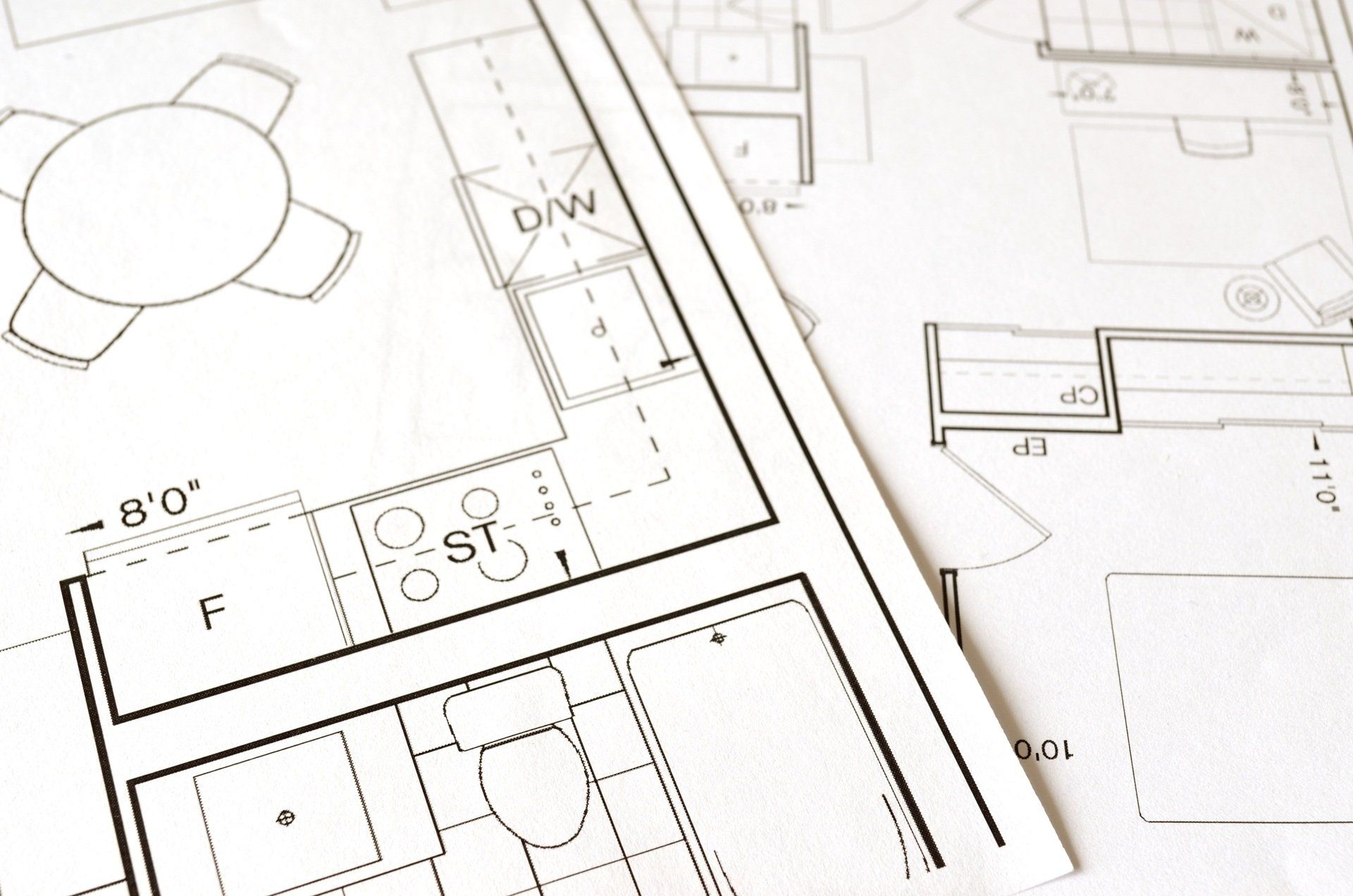Schimberg Group
Architecture & Interior Design
1421 5th Street, Unit D
Sarasota, FL 34236
10 things you might believe architects do but they actually don’t
As architects, we tend to believe that we can do almost anything, but here are 10 things we don’t actually do.

In my previous post, I discussed several services which some readers may have been surprised to learn that architects can provide. Several of these services go beyond the common understanding of what architects do.
Continuing this theme, I thought it would be interesting to discuss some commonly mistaken assumptions and preconceived ideas about architects. This is meant to inform, but possibly, and more importantly, put a smile on your face, which we all need right about now.
These misconceptions include assumptions about how architects dress, our artistic skills, our mathematical skills, our career focus, construction abilities, architectural genre, our DIY skills, our approach to business, our choice of eyewear and our rate of pay.
You may find some of these line items applying to some of us at Schimberg Group Architecture, but surely not all.
1. Architects only wear black
Architects are not permanently clad in black! When you think of architects, an image of the Saturday Night Live character Sprockets as portrayed by Mike Meyers may come to mind, but the truth is that architects don’t have a uniform style.
We don’t have to wear a suit and tie all of the time either. In fact, we are just as comfortable in a pair of blue jeans, dressed up with a collared button-up shirt and a sports coat.
However, that’s about as much of a uniform look as you’ll see by any one architect.
We do often care about our clothes and because a large part of our business is based on presentation, most architects would agree that it does matter how we look.
I often dress according to the type of project I am presenting to my client.
For example, for our project Resilient Retreat, a 30-bed retreat for trauma patients, the property was situated in a rural setting with conservation land. For the first presentation, I opted for jeans, an earthy button down dress shirt and sports jacket.
For our presentation to Imeca, a retail hardware chain with properties throughout the country, I chose something more formal: nice slacks and a tailored button-down shirt.
While architects are keenly aware of the importance that clothing can play in client meetings and presentation, we definitely do not wear all black, all of the time.
2. Architects can paint and sketch
It’s not at all true that all architects can draw and paint.
I happen to be one of those architects that can draw and paint, but that’s because my mother started me off taking private art lessons from the age of 6.
I learned to use pastels, water colors, oils and acrylics.
I’ve always loved fine art and as I developed more into an architect, I developed my hand sketching skills as well.
In fact, I learned how to sketch with ink after a trip to study architecture in Greece.
However, not all architects can sketch or paint.
Today, architecture can be so computer-centric that the graphic quality of drawings, or even the process to design, allows architects to use software tools to construct and visualize their ideas.
Architects can design their projects without having to ever hold a pen in hand or use paper to write on.
I prefer to start with a sketch, but sketching or painting is not a requirement to be an architect.
3. Architects are good at math
This is one of those concepts that is typically lumped into the conversation of why someone chose not to become an architect.
Whenever I get into the conversation with someone that I’m an architect, the first thing I hear is, “I wanted to be an architect, but I wasn’t good at math.”
I confess, I was good at math. Calculus II to be exact, but I hated trigonometry.
Math is surely an integral part of our field, but on a more basic level than most people outside our industry might assume.
Addition, subtraction, calculating area, and maybe a Pythagorean Theorem once in a while, but one does not need to be a math wizard to be an architect.
I should note that an understanding of proportion and scale is extremely important for architects. However, I would argue that these elements are inherent rather than calculated.
And similar to my comment above regarding sketching, it definitely helps to have an understanding of math, but with the help of computers, and computer aided design, the math is often done for you.
Architects are typically good at math, but they are not “mathematicians” by trade, and becoming an architect is not contingent on understanding mathematics at a high level.
4. We only do … architecture
In my last blog post, I wrote about all of the other services and skills that architects can provide.
However, it is a common misconception that architects only do architecture.
We can develop property.
We can become contractors.
We can become real estate attorneys.
We can protect clients as owner representatives.
In fact, my firm began as a construction manager/owner representative company. After a couple of years, I then began focusing on architecture and interior design.
As architects, we can do much more than design buildings.
Because architects are exposed to many diverse roles during their careers, they can often find themselves drawn in other directions and possibilities.
I always tell students, interns, and younger architects that one of the most appealing aspects of our choice of career is the plethora of opportunities that architecture provides.
An architecture degree can expose you to a vast array of different career opportunities, whether becoming a developer or designing and fabricating furniture.
The options are endless.
5. Architects actually construct buildings
Typically, architects do not build the projects we design. There are some that do, but for the most part, architects design, contractors build.
This is a common misunderstanding in residential architecture and design, but we also encounter it in the commercial arena.
We get asked questions like, “So when do you start construction?” or “Who do you use to pour the concrete?”
Most architects are not general contractors, especially on commercial projects.
We work with contractors.
We recommend contractors.
We may even be able to hammer a nail, but we do not build the projects that we design.
Contractors or builders build buildings. We design them.
6. Architects only design houses
When I mention to someone that I am an architect, after they tell me that they couldn’t be an architect because they aren’t good at math, they often follow with, “So, you design houses?”
Some architects focus only on residential design. Others only design commercial projects. However, it’s also quite common for architects, like us, to design both commercial and residential structures.
At Schimberg Group, our primary focus is on commercial projects. We are very selective about the residential projects we choose to work on.
Personally, I prefer commercial projects because they have clear deadlines, they often have a broader impact on the community, and the decision-making process is less about personal preferences and more aligned to clear business goals or needs.
The residences we have designed have typically been for select commercial clients who desired to build a new home for their family.
However, many architects choose not to focus solely on residential design because the design of homes does not require a registered architect, whereas commercial projects do.
Commercial projects also require that architects remain in good standing with state licensing requirements and retain a substantial liability policy.
For those architects that fulfill these requirements, designing commercial buildings is an obvious alternative to designing homes.
7. DIY @ home
Let me be clear. I will hire an expert to fix my home 9 out of 10 times before I try to fix it myself.
Not all architects are handy.
Yes, I worked construction for a year during college. I know how to properly use a hammer and how to nail studs together. I can typically figure out how to fix minor plumbing issues and I love demolition!
But I, as an architect, I am not a Do-It-Yourselfer.
Many architects are, and I recognize and I admire that very much.
But many are not.
Often, paying an expert for their knowledge and experience is much more satisfying, and less frustrating and time consuming, than trying to figure it out for yourself.
I’ll stick to hiring professionals and I know many architects would agree.
8. We work for free in order to get the job
I have had clients who honestly believe that architects should provide preliminary work for free to win a project.
Sometimes this work may just take a few hours, but it can also involve an extensive investment of our time.
Quite simply, this is not how architects should operate, though some will provide this work for free.
With any given project, an architect is often willing to invest time and energy into winning that project.
But it should not be an expectation, on the part of clients, that this will include free services.
In Europe, projects are often awarded based on competitions. The architectural firm often pays for the work involved in order to win these competitions and the related projects. This is understood from the beginning and is culturally accepted. Often, this investment is recovered in the resulting project fees.
However, in the United States, we very rarely hold competitions that take architects through some level of design before the project is awarded. We go through a proposal process, an interview process or sometimes may provide an initial sketch to tempt a client’s interest.
However, the expectation that architects provide any amount of free work in order to get the project is simply bad business. I do know architects that follow this business model in order to create cash flow and because they believe this is necessary to win the client’s trust.
I personally have found that by not approaching projects in this manner, but instead providing an appropriate, up-front few hours gratis, and then requiring a fee to move forward. commands a level of professionalism and business acumen that by most client’s standards results in respect and ultimately hiring us to do the project.
Working for free is not only an unfair situation for a firm, it’s also just not fun.
9. We all wear funky glasses
I love my collection of glasses.
I don’t wear watches or collect tons of shoes.
I do love to wear glasses and I have owned many pairs over the years.
However, the stereotypical, funky looking, dark rimmed, thick frames that Le Corbusier used to wear is not typical for architects.
In fact, just for the record, I find that many wear contacts.
Glasses provide an opportunity to make a statement, while also giving a level of distinguished presence to any architect’s aura.
But … they are all not big, black and chunky!
My favorite glasses have gray rims with tortoiseshell temples.
I prefer sophisticated to funky.
10. Architects get paid commensurate with lawyers and doctors
I saved the best for last.
This is probably one of the most inaccurate realities architects face.
One would think that architects, the people that design the edifices we live in, the buildings we work in every day of our lives, the communities we walk in and stroll along urban storefronts or museums or restaurants would be paid commensurate with lawyers and doctors.
Doctors save lives.
Lawyers tend to legal matters.
Why do architects, whose designs impact everyone’s daily lives, who are responsible for public health and safety on multiple levels, who create environments that affect the way we live and breathe and function, not get paid in the same way that doctors and attorneys do?
I really don’t know why, but we don’t.
Don’t get me wrong, I make a very good living and most architects will tell you that not only do they do well, but more importantly, they love what they do.
It is rare to find a successful architect who does not love being an architect.
I know plenty of doctors and attorneys who cannot say the same.
Unfortunately though, architects notoriously do not hold the same value in our society as doctors and attorneys.
Maybe I’m a little biased, but other than the select 1% (as in anything), we’re on the second tier of appropriately paid careers below those other two.
What do you think?
I hope that anyone reading this post enjoyed it and learned a bit about some of the stereotypes architects contend with on a regular basis.
I’d love to hear from readers what you thought about this list.
If you happen to be an architect, I’d especially love to know if you agree or disagree with any of my points.
To share your comments, email barron@theschim.com.
Also, don’t forget to subscribe to our newsletter, Methods and Madness, for more insight, information, and visual stimulation for all things architecture and interior design related.
Recent Blog Posts
Website design by Archmark






